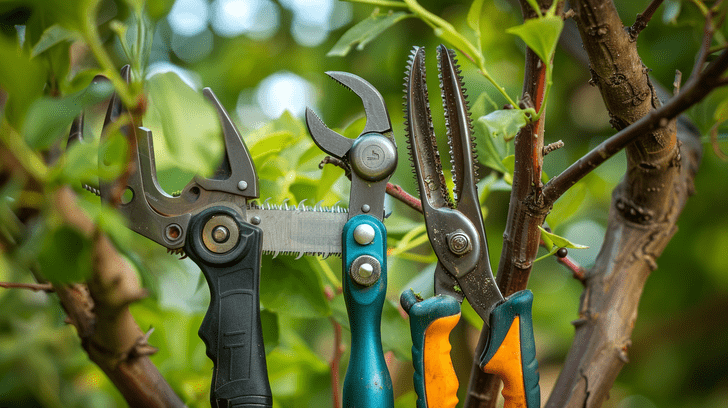Ficus Tree Trimming: When and How to Trim for Optimal Health
When it comes to ficus tree trimming, timing is crucial to ensure the optimal health and appearance of your plant.
The best time for pruning a ficus tree depends on the purpose of trimming. For maintenance pruning, which involves removing dead or damaged branches, you can trim your ficus tree at any time of the year.
However, for more extensive pruning or shaping, it’s recommended to trim your ficus tree during the dormant season, typically in the winter or early spring, when the tree is not actively growing.
Why Prune Your Ficus Tree?
Pruning your ficus tree regularly is essential to maintaining its health, appearance, and overall longevity. By pruning your tree, you’ll encourage healthy growth, promote a strong branch structure, and prevent disease.
When you don’t prune your ficus tree, it can become leggy and weak, making it more susceptible to pests and diseases.
Prune your tree to remove dead or damaged leaves and branches, allowing air and light to circulate throughout the plant. This will help your ficus tree thrive and look its best.
When Should Ficus Be Pruned?
Determine the best time to prune your ficus tree by considering its growth cycle, as pruning at the wrong time can cause stress and weaken the plant.
Pruning ficus trees at the right time guarantees a healthy and thriving tree.
Here are some guidelines to keep in mind:
- Prune during the dormant season: Ficus trees typically go dormant during the winter months, making it an ideal time for pruning.
- Avoid pruning during active growth: Pruning during the spring and summer can cause stress to the tree, leading to weakened health.
- Prune after flowering: If your ficus tree produces flowers, prune it immediately after blooming to encourage new growth.
How to Prune a Ficus Tree
With your ficus tree pruned at the right time, you’re ready to tackle the trimming process itself, which requires a thoughtful approach to maintain the tree’s shape and promote healthy growth.
When it comes to how to prune a ficus tree, it’s crucial to use the right tools and techniques.
Start by removing any dead or damaged branches, as these can spread disease and attract pests.
Next, identify any crossing or rubbing branches and trim them to improve air circulation and reduce the risk of damage.
Finally, use your pruning shears to shape the tree, cutting just above a node or bud to encourage new growth.
Types of Ficus Trees
You’ll encounter many types of ficus trees, ranging from towering banyans to compact ornamental varieties, each with its unique characteristics and growing requirements.
As you explore the world of ficus trees, you’ll discover a diverse range of species, each with its own strengths and weaknesses.
Here are three notable types of ficus trees you should know:
- Weeping Fig (Ficus benjamina): A popular ornamental variety, known for its drooping branches and small, dark green leaves.
- Indian Laurel (Ficus retusa): A fast-growing, evergreen tree with a broad canopy and small, oval-shaped leaves.
- Rubber Plant (Ficus elastica): A popular houseplant with large, dark green, oval-shaped leaves and a milky sap.
Understanding the different types of ficus trees will help you tailor your trimming and care strategies to meet their unique needs.
Propagating Ficus Trees
One effective way to multiply your favorite ficus tree is by propagating it, a process that involves creating a new plant from a cutting or leaf of the parent tree.
You can take 4-6 inch stem cuttings from the tip of a branch, removing lower leaves and trimming the stem at a 45-degree angle.
Dip the cut end in rooting hormone and plant it in a well-draining potting mix. Keep the soil moist and warm until roots develop.
After trimming your ficus tree, you can also use the pruned branches to propagate new plants. Simply remove lower leaves, trim the stems, and plant them in a pot filled with a well-draining mix.
With a little patience, you’ll have new ficus trees to enjoy.
Potting and Repotting Ficus Trees
Choose a pot that’s only one to two sizes larger than the current one to prevent the soil from becoming too wet, and select a well-draining potting mix specifically designed for indoor plants.
This will guarantee your ficus tree thrives in its new home.
When repotting, gently remove the plant from its container and inspect the roots. Trim any circling or tangled roots to promote healthy growth.
Here are some additional tips to keep in mind:
- Handle the roots with care: Ficus trees don’t like their roots disturbed, so be gentle when handling them.
- Water carefully: Water your ficus tree sparingly after repotting to prevent root rot.
- Monitor for shock: Keep an eye on your plant’s health after repotting, and adjust its care accordingly.
Common Problems With Ficus Trees
As you’ve successfully repotted your ficus tree, it’s now time to be aware of common issues that can arise, including pests, diseases, and environmental stressors that can hinder your tree’s growth.
You may notice pests like spider mites, mealybugs, or scale, which can be treated with insecticidal soap or neem oil. Fungal diseases like root rot can occur if your ficus is overwatered, so make sure to check the soil moisture regularly.
If you’ve recently trimmed your ficus, it may be more susceptible to disease, so keep an eye out for any signs of infection. Environmental stressors like sudden changes in temperature or humidity can also cause stress to your tree.
FAQ For Ficus Tree Pruning
When to trim a ficus hedge?
Every 4 to 6 weeks during the growing season, you’ll want to inspect your ficus hedge for signs of overgrowth or unevenness, and trim it accordingly.
This regular maintenance will help maintain the desired shape and promote healthy growth.
Here are some specific scenarios that may require trimming:
- New growth: If you notice new shoots or branches growing beyond the desired shape, trim them back to maintain the hedge’s shape.
- Dead or damaged leaves: Remove any dead or damaged leaves to prevent the spread of disease and encourage healthy growth.
- Overgrown areas: Trim back overgrown areas to maintain the hedge’s density and promote air circulation.
What is the maintenance of ficus trees?
Maintaining a healthy and thriving ficus tree requires regular attention to its watering, fertilization, pruning, and pest management needs.
As you care for your ficus, you’ll need to trim it regularly to maintain its shape and promote healthy growth.
This involves removing dead or damaged leaves and stems, as well as trimming back overgrown branches.
Regular trimming also helps to encourage air circulation and reduce the risk of disease.
By staying on top of these tasks, you’ll be rewarded with a lush, vibrant ficus that adds beauty and elegance to your space.
Remember, a well-maintained ficus tree is a happy and healthy one, so make trimming a regular part of your care routine.
What to do with ficus cutting?
Now that you’ve trimmed your ficus tree, you’re left with clippings – what’s the best way to repurpose them?
You can breathe new life into these cuttings by using them to propagate new ficus trees or enhancing your existing one.
Here are three creative ways to reuse your ficus clippings:
- Propagation: Dip the cut end in rooting hormone and plant it in a pot filled with well-draining soil. Keep the soil moist and warm until roots develop.
- Layering: Bend a long branch of your ficus tree down to the ground and secure it with a rock. Cover the buried portion with soil and wait for roots to form.
- Topiary: Use the clippings to create a unique topiary shape or design on your existing ficus tree. Simply trim and shape the clippings to fit your desired design.
How do you take care of a ficus tree indoors?
To keep your indoor ficus tree thriving, you’ll need to provide it with the right conditions, including sufficient light, proper watering, and regular pruning.
Most ficus trees, like the popular Ficus benjamina, prefer bright, indirect light, but not direct sunlight.
Water your ficus tree when the top inch of soil feels dry to the touch. Make sure not to overwater, as this can lead to root rot.
You should also fertilize your ficus tree during the growing season (spring and summer) with a balanced fertilizer.
Regular pruning will help maintain a bushy shape and encourage healthy growth.
Conclusion
You’ve now grasped the essentials of ficus tree trimming! By pruning your ficus tree, you’re not only promoting healthy growth but also extending its lifespan.
By following these simple tips, you’ll be well on your way to enjoying your thriving ficus tree for generations to come.So, grab those pruning shears and get trimming – your tree will thank you!







